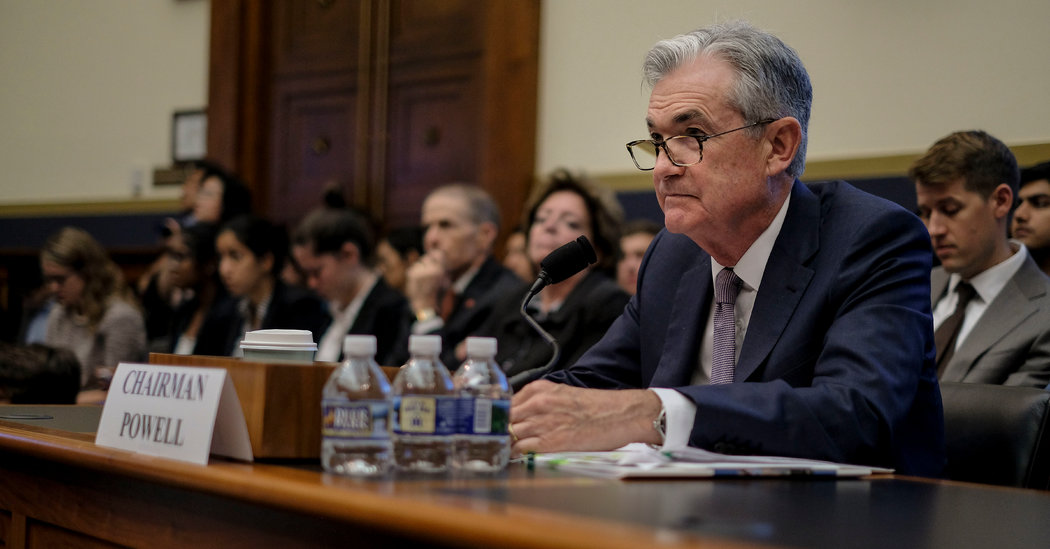WASHINGTON — Federal Reserve officials were sharply divided when they voted to cut interest rates for the first time in a decade in late July, newly released minutes from their meeting show.
Officials lowered borrowing costs by a quarter of a percentage point at the meeting, citing slowing global growth, uncertainties from President Trump’s trade war and stubbornly low inflation.
Notes from the gathering, released Wednesday, show that “a couple” of participants at the meeting — not all of whom get to vote on monetary policy — would have preferred a half-point cut in the federal funds rate to shore up inflation.
But “several” wanted to hold rates steady, noting a strong job market and low unemployment. Two Fed officials voted against the decision to cut.
The division highlights the challenge of setting monetary policy when Mr. Trump’s trade policy is clouding the outlook for an otherwise decent-looking economy. Because it is unclear how much trade tensions will slow growth and whether they will eventually ease, Fed policy must aim at a moving target as it tries to keep the economy expanding steadily.
The president’s next round of tariffs on Chinese goods is expected to take effect Sept. 1, and Mr. Trump has shown no sign of backing down, even as global growth shows cracks and after a powerful recession signal flashed in bond markets.
While consumer spending and overall economic growth are holding up in the United States, household confidence declined in preliminary August data as Americans became less positive about the economic outlook. Some businesses are holding off on investment as Mr. Trump’s trade war fuels uncertainty.
Given that backdrop, officials wanted to make sure they “avoided any appearance of following a preset course,” minutes from the meeting show. “Members generally agreed that it was important to maintain optionality” in setting interest rates.
Jerome H. Powell, the Fed chair, indicated at his news conference after the meeting that the Fed could make additional rate cuts, but did not commit to the timing or extent of future decreases. His comments, and in particular his characterization of the July move as part of a cyclical adjustment rather than the start of a series of cuts that will return borrowing costs to rock bottom, disappointed some investors.
The Fed’s target rate — currently 2 to 2.25 percent — is already much lower than in previous economic cycles.
Market pricing suggests that investors anticipate two or three more cuts this year, based on a tracking tool from CME Group.
Mr. Trump, who has criticized the Fed’s decision to raise rates last year, has increasingly pressured Mr. Powell to lower borrowing costs more aggressively, telling reporters on Wednesday told reporters that Mr. Powell “raised rates too fast, too furious.”
He repeated his view that if the central bank cuts rates further “you will see a rocket ship.” Earlier in the day, Mr. Trump lamented on Twitter that German government bond yields were negative while the United States continued to pay interest.
“WHERE IS THE FEDERAL RESERVE?” he wrote.
Mr. Trump has also criticized the Fed’s decision to continue reducing the huge volume of government-backed bonds it bought to help prop up the economy after the financial crisis a decade ago. Fed policymakers decided at their July meeting to bring an early end to the process, known as “quantitative tightening.”
That decision was also complicated, based on the minutes. While ending the runoff avoided the “appearance of inconsistency,” one in which rate cuts were loosening monetary conditions but policy on bond holdings was tightening them, ending the reduction early might create the “erroneous impression” that the Fed was trying to slow the economy.
The committee wanted the reduction to be seen as a project on autopilot, happening quietly in the background.
Because the effort ended only slightly earlier than planned, officials concluded that there were “only small differences” between the two options, economically.

